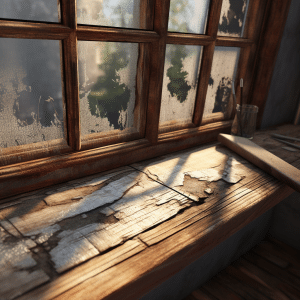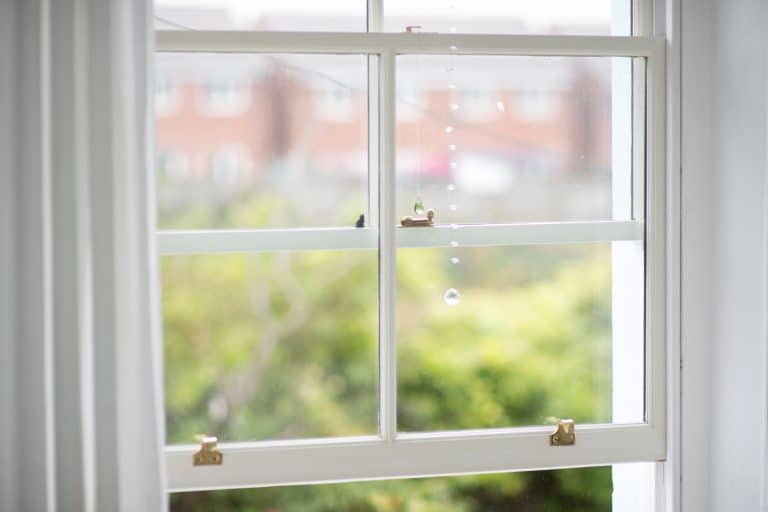Winter Condensation and Damp: How to fix it?
Timber Sash and case windows look beautiful on a period property but in winter, older windows can be inefficient leading to condensation and damp in the home.
What is condensation, and how is it caused?
Condensation is the process where water vapour becomes liquid. All of us have some water vapour circulating in our rooms. When this moist air comes into contact with the cold impermeable surface of a sash and case window, it will release some of the moisture as water droplets on the glass. These droplets can build up, especially overnight, and create a damp layer of droplets on the window making the glass opaque. If left this condensation can create damp problems in the home as the water then drips down onto the window frame creating a pool of water at the bottom, potentially causing damp, rot, mould and mildew.
Winter Condensation
This problem is always worse during the winter months when the weather outside is colder and the rooms are heated.
During winter, the air is generally colder, and there may be temperature variations both indoors and outdoors. When warm, humid indoor air comes into contact with cold surfaces, such as windows or walls, the air loses heat to the cold surface. As a result, the water vapour in the air condenses into liquid water droplets.
Condensation can be a common issue during the winter months, leading to problems such as fogged windows, damp walls, and the potential for mould growth in areas with poor ventilation. Proper insulation, ventilation, and temperature control are important factors in minimizing winter condensation in buildings and other enclosed spaces.
Cooking, steamy kitchens, and bathrooms with hot showers can add to the moisture in the air exacerbating the issue.

What can I do to avoid condensation?
- A modern window will help to avoid this problem. The modern glass technology used in a Ventrolla sash window is fantastic at energy efficiency. The double-glazed panes and Ventrolla Perimeter Sealing System (VPSS) ensure that the cold from outside can’t enter, and warm air from inside can’t escape. These thermal efficiencies are a great way to minimise condensation. As the warm air inside the room hits the glass, it is less likely to condense if the glass panel is not cold.
- A dehumidifier in problem rooms will help to reduce the amount of moisture in the air. These can be picked up reasonably cheaply from DIY stores.
- Ventilation is key to solving the problem of condensation long-term. By making sure extractor fans are on and sash and case windows are regularly opened in rooms that generate moist air, we can help to prevent condensation from forming in the first place.
For more information about how Ventrolla sash windows could help to eliminate condensation in your house, please contact us.

FAQ: How Ventrolla Windows Help Alleviate Winter Condensation
Q1: What causes winter condensation on windows?
A1: Winter condensation occurs when warm, humid indoor air comes into contact with cold window surfaces. As the air cools, the moisture it carries condenses into visible water droplets on the glass.
Q2: How do Ventrolla Windows address the issue of winter condensation?
A2: Ventrolla Windows are designed to provide enhanced insulation and ventilation. The system helps maintain a more consistent indoor temperature, reducing the likelihood of warm, moist air meeting cold window surfaces and forming condensation.
Q3: What features make Ventrolla Windows effective in reducing condensation?
A3: Ventrolla Windows often feature double glazing, which creates a thermal barrier between the indoor and outdoor environments. This minimizes heat transfer and helps prevent the windows from becoming cold enough to cause condensation.
Q4: How does ventilation play a role in preventing condensation?
A4: Ventrolla Windows are equipped with effective ventilation solutions, allowing controlled airflow. Proper ventilation helps regulate humidity levels inside the building, reducing the amount of moisture in the air and decreasing the potential for condensation.
Q5: Can Ventrolla Windows be retrofitted to existing windows?
A5: Yes, Ventrolla offers a range of services for renovating and upgrading existing windows. This can include adding double glazing, repairing or replacing sashes, and improving overall window performance to address condensation issues.
Q6: Are Ventrolla Windows energy-efficient?
A6: Yes, Ventrolla Windows are designed with energy efficiency in mind. The enhanced insulation provided by features like double glazing helps reduce heat loss, making the indoor environment more comfortable and minimizing the conditions conducive to condensation.
Q7: Do Ventrolla Windows require special maintenance to prevent condensation?
A7: While Ventrolla Windows are designed to be low-maintenance, it’s essential to keep them clean and ensure that any ventilation features are functioning properly. Regular maintenance will help maximize their effectiveness in preventing condensation.
Q8: Can Ventrolla Windows improve indoor air quality during the winter?
A8: Yes, by regulating humidity levels and providing effective ventilation, Ventrolla Windows contribute to a healthier indoor environment, reducing the likelihood of mould growth and improving overall air quality.
Q9: How can I inquire about installing Ventrolla Windows in my home or business?
A9: To inquire about Ventrolla Windows installation, you can contact Ventrolla directly through their website or get in touch with authorized dealers and installers in your area.
Q10: Are there additional benefits to Ventrolla Windows beyond reducing condensation?
A10: Yes, Ventrolla Windows offer a range of benefits, including improved energy efficiency, enhanced security, and the preservation of historic or period features in older buildings. Their solutions are tailored to address various aspects of window performance.
